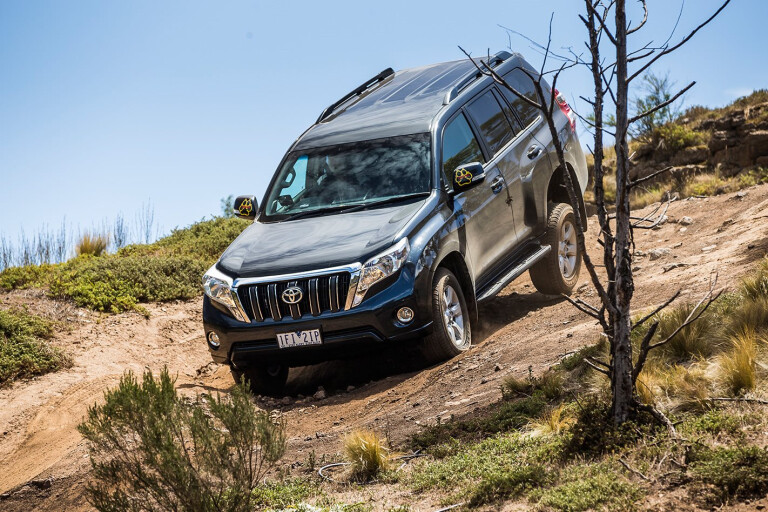
In a year of all-new-vehicle abundance, the Toyota Prado was the only simply-updated four-wheel drive to make our list of finalists.
Toyota’s 2.8-litre 1GD-FTV engine is now the go-to mill for the company’s smaller 4x4s and has been transplanted, along with a new six-speed automatic transmission, to the Prado, bringing more power, torque and, significantly, improved refinement to the popular family wagon.
Toyota didn’t do much else to the Prado. The mid-spec GXL model, as tested here, now gets sat-nav as standard, while the top-spec Kakadu gets some fresh safety tech. Otherwise, it’s business as usual and that’s not such a bad thing.
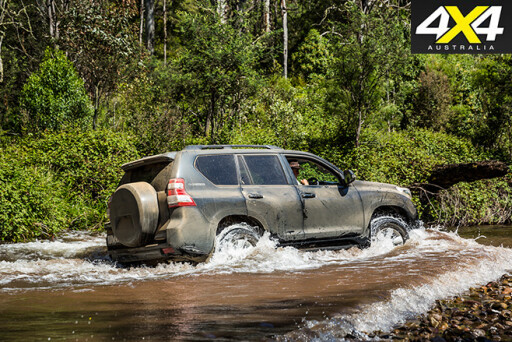 TOURING
TOURING
The 120 Series and the more-recent 150 Series Prados have always been supreme tourers, and there’s no reason to change that for the updated model. The Prado has plenty of interior space; compliant suspension that gives a silky, though sometimes wallowing, ride; and a no-frills level of specification.
These ingredients are just right for a long-road hauler. The improved NVH, and hence refinement of the freshly fitted engine, just adds to the perfect recipe.
 Throw in an unmatched 150 litres of fuel capacity and the Prado beats any standard vehicle for touring range. The Prado needs that capacity, too, as it was the thirstiest car at 4X4OTY, gulping down 13.5L/100km, yet it still runs the longest between fill-ups. The official figure for the auto wagon is 8.0L/100km.
Throw in an unmatched 150 litres of fuel capacity and the Prado beats any standard vehicle for touring range. The Prado needs that capacity, too, as it was the thirstiest car at 4X4OTY, gulping down 13.5L/100km, yet it still runs the longest between fill-ups. The official figure for the auto wagon is 8.0L/100km.
The new six-speed transmission gives a second overdrive for highway touring, but tends to search between fifth and sixth at 100km/h.
TRAIL DRIVING
The supple suspension, big cabin and commanding view of the track ahead make the Prado just as dominant on the tracks as it is on the open roads. The Toyota is really at home here and the rougher it gets the happier it seems to be.
The high-riding wagon is never challenged for clearance and its long-travel rear end tackled the toughest tracks the High Country could throw at the showroom-spec cars.
 As seen in the Hilux and Fortuner, the new 2.8-litre/six-speed powertrain was flawless in this terrain, although it requires a heavy stomp on the throttle to get it up steeper hills.
As seen in the Hilux and Fortuner, the new 2.8-litre/six-speed powertrain was flawless in this terrain, although it requires a heavy stomp on the throttle to get it up steeper hills.
SET-PIECE HILL CLIMB
Speaking of hills, on the rutted climb at the Melbourne 4x4 Proving Ground, the Prado put that plentiful rear-wheel travel to good use to conquer the climb. It needs it, too, as there is no rear diff lock (RDL) in this spec Prado (it’s in Kakadu-spec only) and the ETC feels a generation or two older than that in the new Fortuner and Hilux. The ETC pulsed and grinded its way up the hill but got the Prado there in the end.
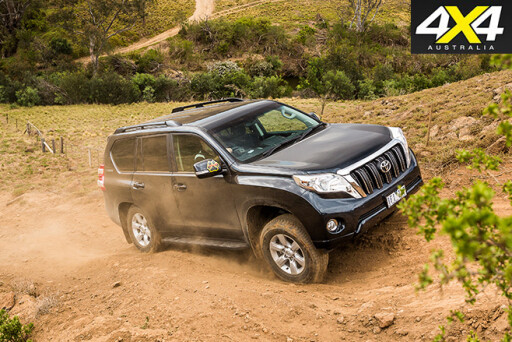 As expected, there are no clearance issues for the Prado, and low range, first gear, is all you need for a controlled descent – no electronic wizardry required!
As expected, there are no clearance issues for the Prado, and low range, first gear, is all you need for a controlled descent – no electronic wizardry required!
CABIN, EQUIPMENT AND ACCOMmODATION
It’s always nice to jump in to the cabin of a decent-sized 4x4, and the Prado just makes the mark here. It is so much more accommodating than any of the 4x4 utes or their wagon derivatives, with a seating position that only a bespoke wagon body can deliver. In fact, on a few occasions our judges mentioned the seating position in the Prado as a positive.
The Prado isn’t left wanting for much, even if the GXL’s cabin is pretty basic and the inclusion of standard sat-nav barely makes up for the fact that, spec-for-dollar, the Toyota is trumped by its newest competitor, the Ford Everest. Sure, the Prado is basic, but it does everything it needs to and it all feels good quality and easy to use. Maybe that’s just the familiarity of the ageing model.
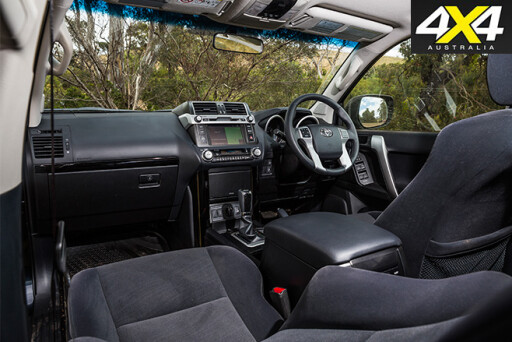 The GXL offers rear seat control for the climate control and has vents right through to the rearmost seats, which are best left for the kids on short trips. The Prado also has tie-down points in the cargo area, unlike its new sibling. There’s a 12-volt outlet, a USB outlet and a 220-volt outlet in the cabin.
The GXL offers rear seat control for the climate control and has vents right through to the rearmost seats, which are best left for the kids on short trips. The Prado also has tie-down points in the cargo area, unlike its new sibling. There’s a 12-volt outlet, a USB outlet and a 220-volt outlet in the cabin.
SUMMARY
Even as the highest-priced car in this bunch, the Prado GXL is still an affordable family 4x4. It does everything asked of it without fuss or fanfare and is a near-on perfect blank canvas on which to create a long-distance tourer.
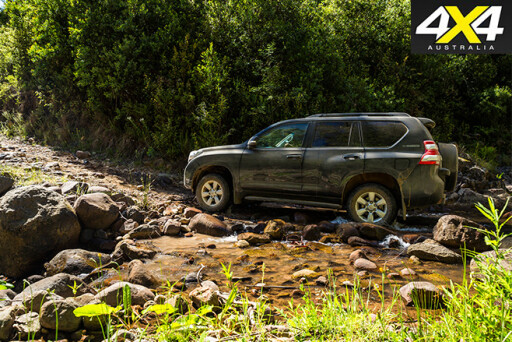 About the only criticisms the Prado scored from the judges centred on its looks and its dopey-eyed front-end treatment, but the Prado has never been a looker. It just gets the job done without being pretty, and that’s what so many people find appealing about it.
About the only criticisms the Prado scored from the judges centred on its looks and its dopey-eyed front-end treatment, but the Prado has never been a looker. It just gets the job done without being pretty, and that’s what so many people find appealing about it.
One of our judges at 4X4OTY must be one of those people, as he gave the Prado the highest score among the finalists.
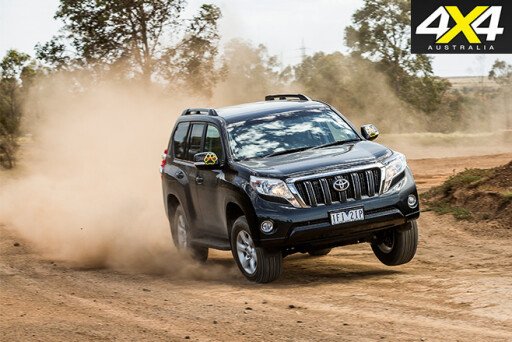 Dean Mellor summed up the Prado by saying: “It ain’t pretty, but a fantastic driving range, impressive off-road capability and superb on-road comfort combine to make the Prado one of the best long-distance touring wagons on the market”. ’Nuff said!
Dean Mellor summed up the Prado by saying: “It ain’t pretty, but a fantastic driving range, impressive off-road capability and superb on-road comfort combine to make the Prado one of the best long-distance touring wagons on the market”. ’Nuff said!
SPECS
Engine DOHC 16-valve 4-cyl turbodiesel
Capacity 2.8-litre (2755cc)
Power 130kW @ 3400rpm
Torque 450Nm @ 1600- 2400rpm
Gearbox 6-speed auto
4X4 System Full-time dual-range
Crawl Ratio 36.1:1
Construction separate chassis
Front suspension independent/coil springs
Rear suspension live axle/coil springs
Wheel/tyre spec 265/65R17 112S
Kerb Mass 2205kg
GVM 2900kg
Payload 695kg
Towing Capacity 2500kg
Seating capacity seven
Fuel tank capacity 150 litres
ADR fuel claim 8.0L/100km
On-test consumption 13.5L/100km
Touring range* 1292km
Price $61,990 (inc auto)
*Based on test consumption and 50km ‘safety margin’.
MORE 4X4 OF THE YEAR
 HOME: 4X4 OF THE YEAR 2016
HOME: 4X4 OF THE YEAR 2016
On the shortlist for 4X4OTY 2016 were the Hilux, Triton, Fortuner, Prado, Navara and Everest.
 THE FINALISTS
THE FINALISTS
The six best 4x4 vehicles of 2015 battling it out to be crowned 4x4 Of The Year 2016.
 THE RESULTS
THE RESULTS
Only one of the six best 4x4s from 2015 can be crowned 4x4 Of The Year 2016
 4X4 OF THE YEAR HOME
4X4 OF THE YEAR HOME
Finding Australia's Best 4x4s

COMMENTS